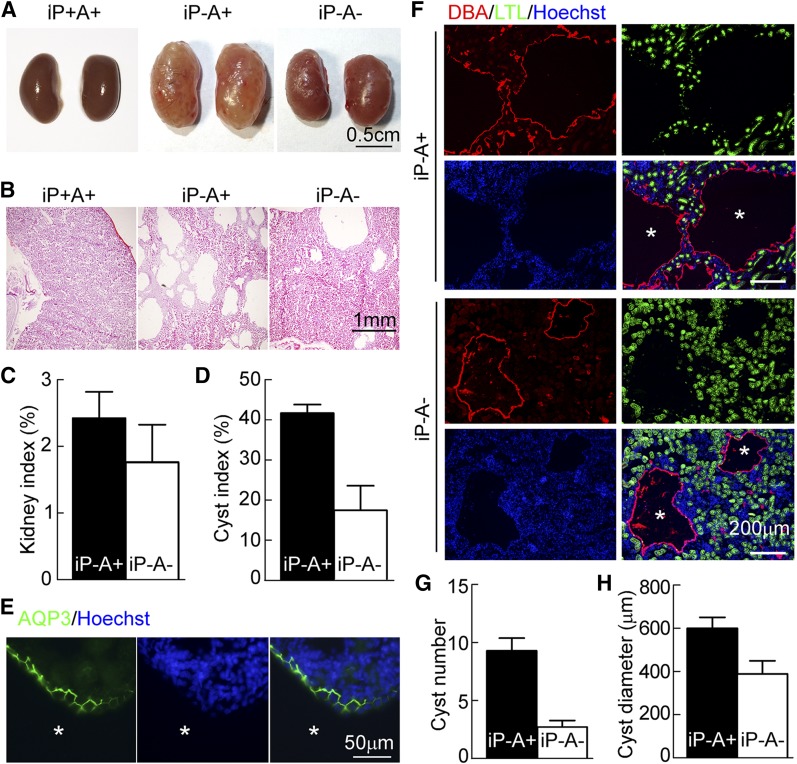Figure 2.
AQP3 deficiency reduces cyst growth in inducible PKD mice. A) Representative images of kidneys from P35 mice with noncystic phenotype (iP+A+, Pkd1flox/flox; Mx-Cre; AQP3+/− genotype with vehicle administration), AQP3-expressing PKD (iP−A+, Pkd1flox/flox; Mx-Cre; AQP3+/− genotype with pI:pC administration), and AQP3-null PKD mice (iP−A−, Pkd1flox/flox; Mx-Cre; AQP3−/− genotype with polyinosinic-polycytidylic acid administration). B) H&E-stained kidney sections. C) Kidney index (ratio of kidney to body weight). D) Cyst index. Means ± sem; iP−A+, n = 8; iP−A−, n = 3. E) AQP3 immunofluorescence in AQP3-expressing PKD (iP−A+) kidneys at postnatal d 35. The sections were stained with AQP3 (green) and Hoechst 33342 (blue). Asterisks indicate cysts. F) DBA and LTL immunofluorescence of AQP3-expressing PKD (iP−A+) and AQP3-null PKD (iP−A−) kidneys at postnatal d 35. Asterisks indicate cysts derived from the collecting duct (CD). G) Number of cysts derived from CD. H) Diameters of cysts derived from CD. Means ± sem; n = 3 (G, H).

